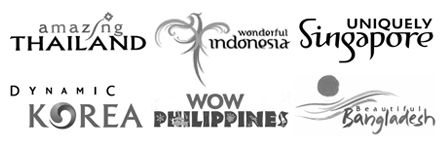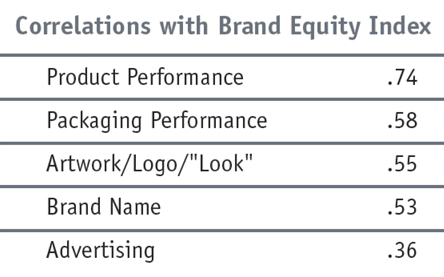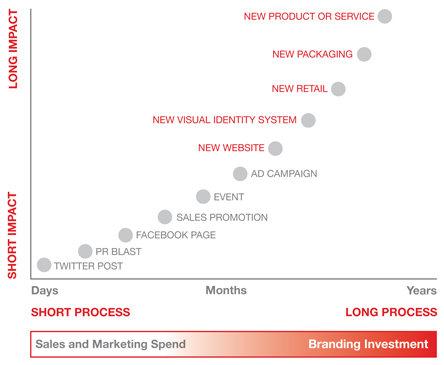-
Our Thoughts
-
Destination-ality: Bringing Personality into Destination Branding

Marketing a destination to consumers is like giving an introduction to a person, only of much greater significance. Today in Asia, tourism is a major source of income and is crucial to further development. In fact, the total contribution of travel and tourism to South East Asia's GDP is estimated to be USD 223.5 billion (almost 11% of GDP) and has been forecasted to rise to USD 405.9 billion by 2021. Clearly then this is an important industry for the governments of these countries to develop.
Over the last decade, major efforts have been put in place to build tourism brands on a national level. Tourism Malaysia was amongst the top ten advertisers in the country, spending RM 14 million in 2007. Even fledgling Vietnam increased its national tourism promotion program budget from VND 25 billion in 2009 to VND 40 billion in 2010. As these governments strengthen their attempts and investments into channeling tourism dollars into their own economies, the consumer is increasingly bombarded by marketing messages.




1.Insight: The introducer had to know Mandy more profoundly to be able to tell that she had a "wicked sense of humour". Likewise, it is important for marketers to understand and familiarize themselves more deeply with the destination they are communicating. Through exploratory research marketers can identify elements that form the essence of a place.
2.Differentiation: The introducer had to ensure that Mandy's "wicked sense of humour" was unique to Mandy and not equally true of everybody- "funniest of all my friends". To understand which of the traits defined for the destination are most true to it, marketers need to study the competition and then decisively narrow down the brand's unique traits.
3.Focus: While introducing Mandy's personality, the introducer focused on her sense of humour without trying to squeeze in too much information about her all at once. This is what made her easy to remember. Similarly, with destination branding, one of the most important factors is focus- having one story. Pushing too many "unique" but unrelated brand characteristics can actually dilute the destination Brand, add to the market clutter, and make the brand forgettable.
This is the process we at Span Consulting use to create and build more meaningful brands which have bigger financial payoff. This is real branding, beyond just advertising. This is "Destination-ality"!
- Span Consulting is a research, strategy, and innovation consultancy based in Singapore and Los Angeles. We help brands identify and reach their full potential by taking them from "the way it IS" to "the way it COULD be". We believe Mandy – and your brand – deserve a proper introduction..
www.spanconsulting.com
-
Quick-Fix Marketing or Long-Term Branding?
However much they experiment and spend on these methods, at best what they create is a good ad campaign that runs for a few months and increases awareness and sales for the short-term, thereby appeasing any "brand worries" for the moment. At worst, it could do some real long term damage, creating clutter and mixed messaging that results in customer confusion, fatigue, or cynicism towards their product and company.
When it comes to developing strong brands, no advertising campaign or PR blast can create that profitable aura the great brands have nurtured for years. While one should not entirely dismiss the role of advertising in growing awareness and positioning a brand, it is in fact, the least important factor in shaping consumer perceptions and attitudes.

Source: Ipsos-ASI, The Advertising Research Company, 2002.
"Building Brand Equity Through Advertising"
What do these financially successful brands do that sets them apart? They walk the talk. They invest their budget not only in announcing, but in actually doing and delivering.
Yes, making changes in these components of ones business requires time and investment. There is always a temptation to take a shortcut – to turn to advertising or PR alone to create a spike in awareness or sales that would help the marketing department shine for a month or two. However, only investment at the level of product, packaging, and identity brings long-term impact and growth.

Source: Span Consulting
1. A quick shot of coffee, red bull, or even a cigarette might give you an instant rush. Problem solved! …But in the long term, such "solutions" will have no positive impact, or will even be potentially harmful.
– or –
2. Begin to make changes to your diet, exercise habits, and overall lifestyle.
Of course this is no quick fix, but the effects are true, with lasting health benefits for a lifetime.

Invest accordingly.
- Span Consulting is a research, strategy, and innovation consultancy based in Singapore and Los Angeles. We help brands identify and reach their full potential by taking them from "the way it IS" to "the way it COULD be". We do not sell coffee or cigarettes.
www.spanconsulting.com
Destination Branding for Tourism in Southeast Asia: Extending and Integrating Internal Branding
(Summary, Excerpts)
(Summary, Excerpts)
To have us address a topic of interest to you, get in touch…